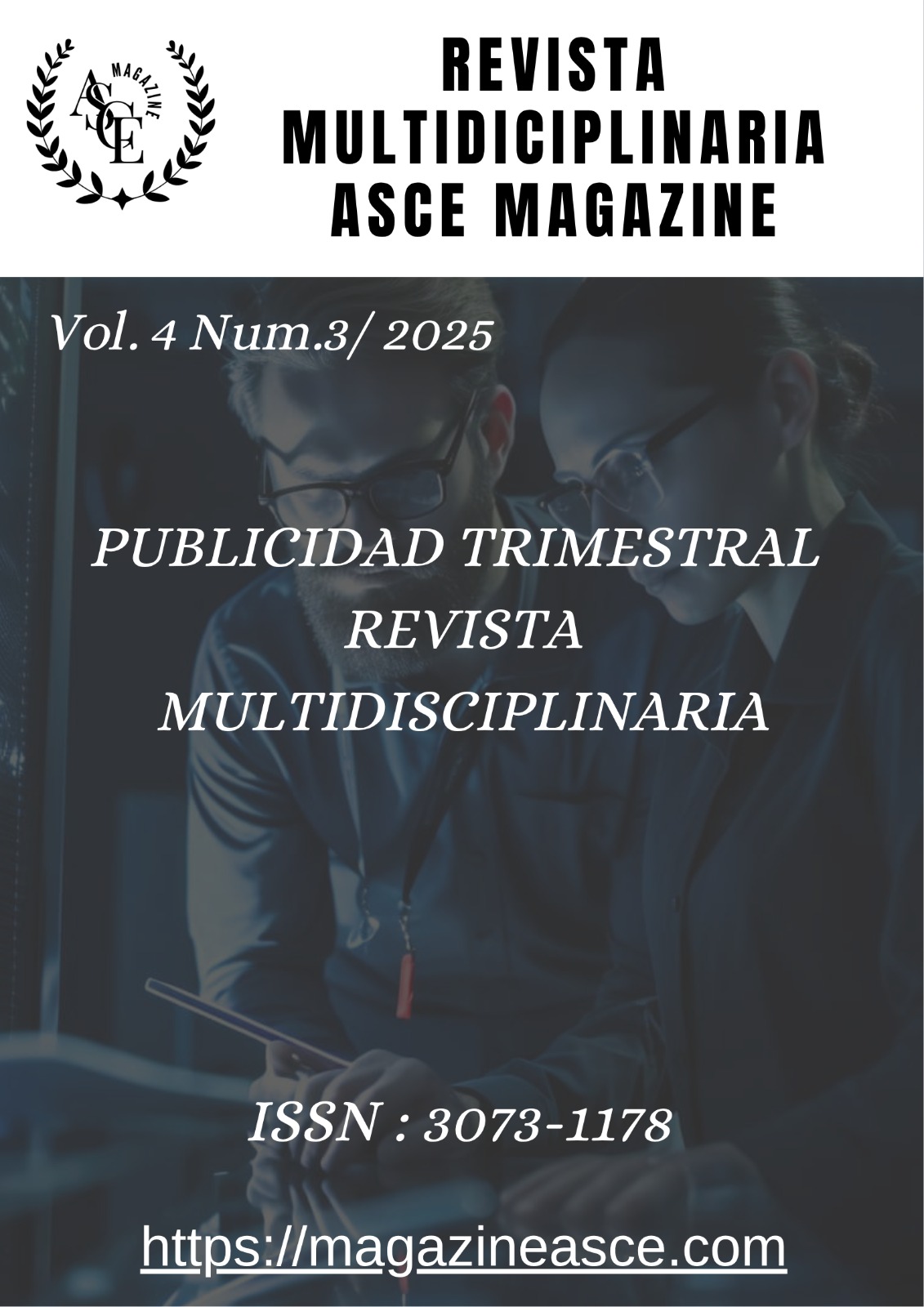Hybrid Machine Learning Models for Macroeconomic Forecasting with High-Frequency Time Series
DOI:
https://doi.org/10.70577/ASCE/622.642/2025Keywords:
macroeconomic forecasting, machine learning, hybrid models, time series, ARIMA-LSTM, high frequency.Abstract
This study explores the use of hybrid machine learning models and traditional econometrics to improve the forecasting of macroeconomic indicators from high-frequency time series. Hybrid models, such as the combination of ARIMA with LSTM or SVM, seek to capitalize on the strengths of both approaches: capturing linear patterns with classical models and detecting nonlinear and complex relationships with machine learning algorithms. Recent literature supports that these approaches can, under certain conditions,outperform the accuracy of traditional methods in anticipating variables such as GDP, inflation, and unemployment, especially in volatile financial contexts. However, the success of such models depends largely on the quality and quantity of available data, as well as optimal algorithm configuration. The paper also highlights significant challenges: risks of overfitting, high computational demands, and sensitivity to biases and errors in the training data. Furthermore, it emphasizes the importance of rigorous validations and the inherent risk of transferring model improvements to real-world macroeconomic practice, given the highly complex and multifactorial environment. In short, although the potential of these models is significant, their adoption must be accompanied by caution and robust evaluations, considering both their possibilities and their limitations.
Downloads
References
Atif, D. (2025). Enhancing long-term gdp forecasting with advanced hybrid models: A comparative study of arima-lstm and arima-tcn with dense regression. Computational Economics, 65(6), 3447–3473. https://doi.org/10.1007/s10614-024-10683-5 DOI: https://doi.org/10.1007/s10614-024-10683-5
Behera, S., Ramana, A. V., Venkata Pratima, P., Sinha, K., Rao, P. S., & Ayaz Uddin, M. (2024). Evolutionary hybrid neural networks for time series forecasting. 2024 IEEE International Conference on Interdisciplinary Approaches in Technology and Management for Social Innovation (IATMSI), 1–6. https://doi.org/10.1109/IATMSI60426.2024.10502740 DOI: https://doi.org/10.1109/IATMSI60426.2024.10502740
Carriero, A., Pettenuzzo, D., & Shekhar, S. (2025). Macroeconomic forecasting with large language models (No. arXiv:2407.00890). arXiv. https://doi.org/10.48550/arXiv.2407.00890 DOI: https://doi.org/10.2139/ssrn.4881094
Coulombe, P. G., Goebel, M., & Klieber, K. (2024). Dual interpretation of machine learning forecasts. arXiv. https://doi.org/10.48550/ARXIV.2412.13076
Desai, A. (2023). Machine learning for economics research: When, what and how. https://doi.org/10.34989/SAN-2023-16 DOI: https://doi.org/10.2139/ssrn.4404772
Dong, Z., & Zhou, Y. (2024). A novel hybrid model for financial forecasting based on ceemdan-se and arima-cnn-lstm. Mathematics, 12(16), 2434. https://doi.org/10.3390/math12162434 DOI: https://doi.org/10.3390/math12162434
Garai, S., Paul, R. K., Yeasin, M., & Paul, A. K. (2024). Ceemdan-based hybrid machine learning models for time series forecasting using mars algorithm and pso-optimization. Neural Processing Letters, 56(2), 92. https://doi.org/10.1007/s11063-024-11552-w DOI: https://doi.org/10.1007/s11063-024-11552-w
Haponik, A. (2024, October 6). Machine learning and deep learning in economics. Addepto. https://addepto.com/blog/machine-learning-in-economics-how-is-it-used/
Kabir, M. R., Bhadra, D., Ridoy, M., & Milanova, M. (2025). Lstm–transformer-based robust hybrid deep learning model for financial time series forecasting. Sci, 7(1), 7. https://doi.org/10.3390/sci7010007 DOI: https://doi.org/10.3390/sci7010007
Kristjanpoller, W. (2024). A hybrid econometrics and machine learning based modeling of realized volatility of natural gas. Financial Innovation, 10(1), 45. https://doi.org/10.1186/s40854-023-00577-0 DOI: https://doi.org/10.1186/s40854-023-00577-0
Lee, S. (2025). A close look at top forecasting in macroeconomics. Retrieved July 19, 2025, from https://www.numberanalytics.com/blog/forecasting-top-macroeconomics-guide
Mou, S., Xue, Q., Zhang, W., Kinkyo, T., Hamori, S., Chen, J., Takiguchi, T., & Ariki, Y. (2024). Integrating textual and financial time series data for enhanced forecasting*. 2024 16th IIAI International Congress on Advanced Applied Informatics (IIAI-AAI), 541–544. https://doi.org/10.1109/IIAI-AAI63651.2024.00103 DOI: https://doi.org/10.1109/IIAI-AAI63651.2024.00103
Ozdemir, O., & Yozgatligil, C. (2024). Forecasting performance of machine learning, time series, and hybrid methods for low‐ and high‐frequency time series. Statistica Neerlandica, 78(2), 441–474. https://doi.org/10.1111/stan.12326 DOI: https://doi.org/10.1111/stan.12326
Rafor, B., Gauran, I. I., Ombao, H., Lansangan, J. R., & Barrios, E. (2025). Analysis of experiments with high frequency time series responses and the implications for power and sample size. Scientific Reports, 15(1), 16752. https://doi.org/10.1038/s41598-025-00554-w DOI: https://doi.org/10.1038/s41598-025-00554-w
Slater, L. J., Arnal, L., Boucher, M.-A., Chang, A. Y.-Y., Moulds, S., Murphy, C., Nearing, G., Shalev, G., Shen, C., Speight, L., Villarini, G., Wilby, R. L., Wood, A., & Zappa, M. (2023). Hybrid forecasting: Blending climate predictions with AI models. Hydrology and Earth System Sciences, 27(9), 1865–1889. https://doi.org/10.5194/hess-27-1865-2023 DOI: https://doi.org/10.5194/hess-27-1865-2023
Song, Y., Cai, C., Ma, D., & Li, C. (2024). Modelling and forecasting high-frequency data with jumps based on a hybrid nonparametric regression and LSTM model. Expert Systems with Applications, 237, 121527. https://doi.org/10.1016/j.eswa.2023.121527 DOI: https://doi.org/10.1016/j.eswa.2023.121527
Stempień, D., & Ślepaczuk, R. (2025). Hybrid models for financial forecasting: Combining econometric, machine learning, and deep learning models (No. arXiv:2505.19617). arXiv. https://doi.org/10.48550/arXiv.2505.19617
Wang, J. (2024). A hybrid MODWT-PSO-SVM model for time series forecasting. In H. Wu & H. Li (Eds.), International Conference on Computer Graphics, Artificial Intelligence, and Data Processing (ICCAID 2023) (p. 131). SPIE. https://doi.org/10.1117/12.3026620 DOI: https://doi.org/10.1117/12.3026620
Yang, Y., Xu, X., Ge, J., & Xu, Y. (2024). Machine learning for economic forecasting: An application to china’s gdp growth (No. arXiv:2407.03595). arXiv. https://doi.org/10.48550/arXiv.2407.03595
Zhang, L., & Hua, L. (2025). Major issues in high-frequency financial data analysis: A survey of solutions. Mathematics, 13(3), 347. https://doi.org/10.3390/math13030347 DOI: https://doi.org/10.3390/math13030347
Downloads
Published
How to Cite
Issue
Section
License
Copyright (c) 2025 Gabriela Cecilia Quirola Quizhpi, Cristian Luis Inca Balseca

This work is licensed under a Creative Commons Attribution-NonCommercial-NoDerivatives 4.0 International License.






























